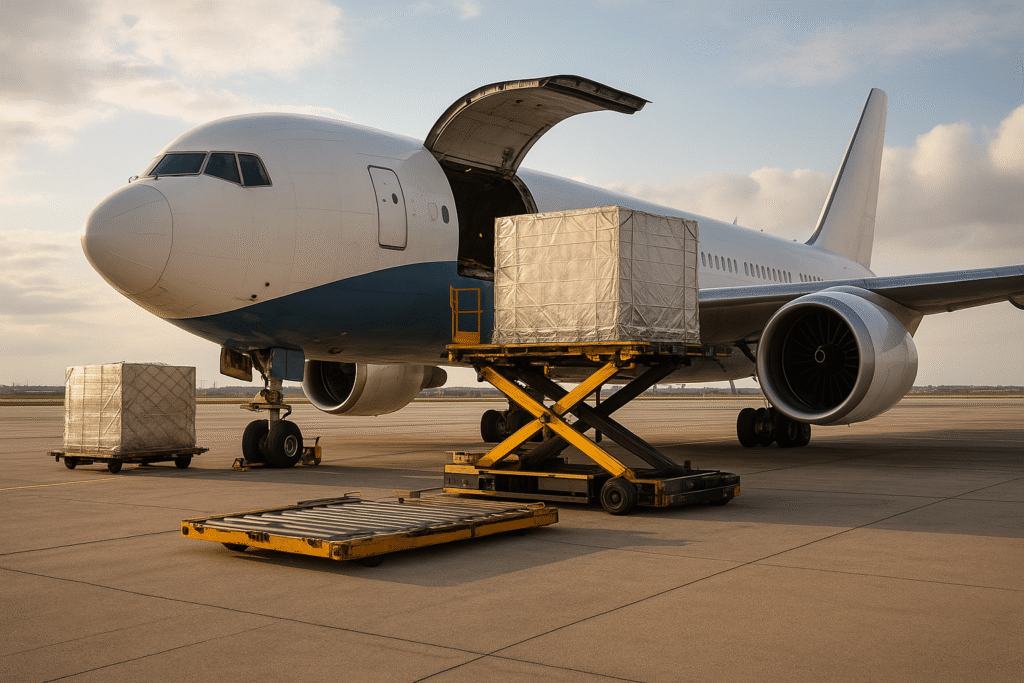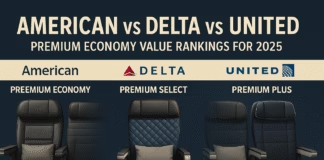The cargo aircraft industry sits at the nexus of global commerce and aviation technology. In 2025, the outlook for freighters and logistics carriers is defined by surging e-commerce demand, sustainability mandates, digital innovation, and shifting trade routes. Industry trackers at IATA point to single-digit growth in air-cargo demand for 2025 as trade normalizes after 2024’s rebound, while macro risks remain elevated (IATA Global Outlook and Air Cargo Market Analysis). IATA+1
At the same time, operators face volatility from trade policies and capacity constraints. For fleet and conversion context, explore our internal hubs: Cargo Aircraft and Commercial Aircraft.

Sustainability in Air Cargo
Environmental pressure is pushing airlines and freight operators to decarbonize. The headline lever is sustainable aviation fuel (SAF), which can reduce lifecycle CO₂ by up to ~80% versus conventional jet fuel in the right pathways (feedstock/processing) according to IATA (SAF explainer). IATA
Major carriers are publishing concrete targets: Cathay Pacific/Cathay Cargo has committed to use SAF for 10% of total fuel consumption by 2030 (Cathay commitment), and Air France–KLM likewise aims to incorporate at least 10% SAF by 2030 across operations (Air France SAF page). Cathay PacificAirfrance Corporate
In the United States, the federal SAF Grand Challenge targets 3 billion gallons/year of domestic SAF production by 2030, scaling to cover all U.S. demand by mid-century (U.S. DOE: SAF Grand Challenge). The Department of Energy’s Energy.gov
Operators are also investing in newer, more fuel-efficient freighters and optimizing flight paths to cut burn—moves that lower emissions, improve eligibility for green financing, and appeal to sustainability-minded shippers. For aircraft choices shaping these strategies, see our Cargo Aircraft coverage.

Digital Revolution and AI
Automation and artificial intelligence are transforming cargo logistics. Predictive analytics now help airlines forecast demand and optimize aircraft routing and belly/freighter mix—cutting empty space and boosting yields (see DHL’s “Artificial Intelligence in Logistics” report). On the security side, AI-assisted risk targeting screens shipment data before loading; the U.S. program Air Cargo Advance Screening (ACAS) exemplifies how pre-departure analytics flag anomalies faster than manual review. On the ground, robots and automated conveyors accelerate warehouse turns, while IoT sensors and standards like IATA’s Interactive Cargo stream real-time temperature, shock, and location data to carriers and shippers.
Digital twins are emerging as the control tower for this data—mirroring aircraft, containers, and hubs so planners can simulate disruptions and choose the least-cost reroute in minutes. For fleet context and platform choices behind these networks, explore our hubs Cargo Aircraft and Commercial Aircraft (internal).
Embracing these technologies requires investment and cultural change—new data practices, retraining, and tighter airline-forwarder cooperation—but the payoff is higher throughput, fewer service failures, and a more resilient door-to-door supply chain.
E-Commerce: The Growth Engine—But for How Long?
Online shopping remains the dominant driver of air-cargo growth. Globally, ecommerce represented ~19.9% of retail sales in 2024 and is projected to pass 20% in 2025, with growth continuing through the forecast window—clear evidence that parcel-heavy demand will stay elevated for now (Insider Intelligence / eMarketer). Ecommerce giants depend on fast, reliable air freight to meet next-day expectations. The risk: over-reliance on a single demand stream. If consumer spending softens or fulfillment models tilt toward slower ocean legs, cargo volumes can whipsaw. To hedge, integrators and forwarders are diversifying into industrial and perishables flows and partnering with local micro-fulfillment centers to shorten last-mile distances. Freighter operators are also refreshing fleets—see our Cargo Aircraft hub for platform trends and conversions .
Capacity Challenges and Market Pressures
Despite rising demand, capacity growth has cooled. IATA reports belly and freighter supply expanded briskly in 2024 but slowed to ~3.2% YoY in Q1 2025 amid aircraft availability and MRO bottlenecks (IATA Global Outlook, June 2025). Geopolitical shocks add volatility: the Red Sea crisis briefly pushed shippers to the air, lifting rates and bookings while complicating schedules (Reuters). U.S. trade policy shifts could further reshape flows, especially on transpacific lanes. To manage shortfalls, carriers are launching dedicated freighter services, experimenting with regional mini-freighters, pooling capacity with 3PL partners, and leaning on dynamic pricing/instant e-booking to match supply with demand. Network resilience also means fleet agility—mixed fleets that can swing between passenger belly capacity and dedicated lift (see Commercial Aircraft for type coverage; internal).
Emerging Markets and New Trade Routes
As traditional lanes saturate, carriers are pivoting to Southeast Asia, Africa, and Latin America. Recent IATA market analyses show these regions leading growth at times with double-digit YoY gains, aided by manufacturing shifts and cross-border ecommerce (IATA Air Cargo Market Analysis – April 2025). New cargo hubs, FTZs, and bilateral agreements are drawing lift, while U.S. and EU carriers add routes to diversify away from crowded transatlantic/transpacific corridors. For SMEs, cross-border ecommerce platforms are opening air access to new customers—extending the ecommerce growth story beyond the largest merchants. Spreading exposure across geographies and currencies helps stabilize yields when one region cools.
Sustainable Infrastructure and Technology
The green agenda goes beyond fuel. Airports and logistics hubs are deploying electric ground support equipment, building energy‑efficient warehouses and investing in renewable power sources. Data‑driven tools enable operators to reduce idle time and optimize loading, cutting emissions on the ground. Emerging technologies like hydrogen‑electric propulsion and hybrid engines promise longer‑term solutions for decarbonizing freighters, although these aircraft are still in early development. Advanced materials and additive manufacturing could lighten airframes, increasing payload capacity and improving efficiency. Keeping pace with these innovations will require collaboration between airlines, manufacturers and regulators.
Conclusion
The cargo aircraft sector is navigating a period of rapid change. Sustainability initiatives are reshaping fuel strategies; AI and digital platforms are redefining operations; e‑commerce remains both a catalyst and a risk factor; and global trade routes are shifting toward emerging economies. Addressing capacity constraints and investing in green infrastructure will be essential for carriers that want to thrive in this dynamic environment. At Aviation Titans we’re committed to tracking these developments and sharing insights with our readers. For questions or partnership inquiries, feel free to contact us. Together, we can watch the skies and explore the technology and trends that keep cargo moving.






